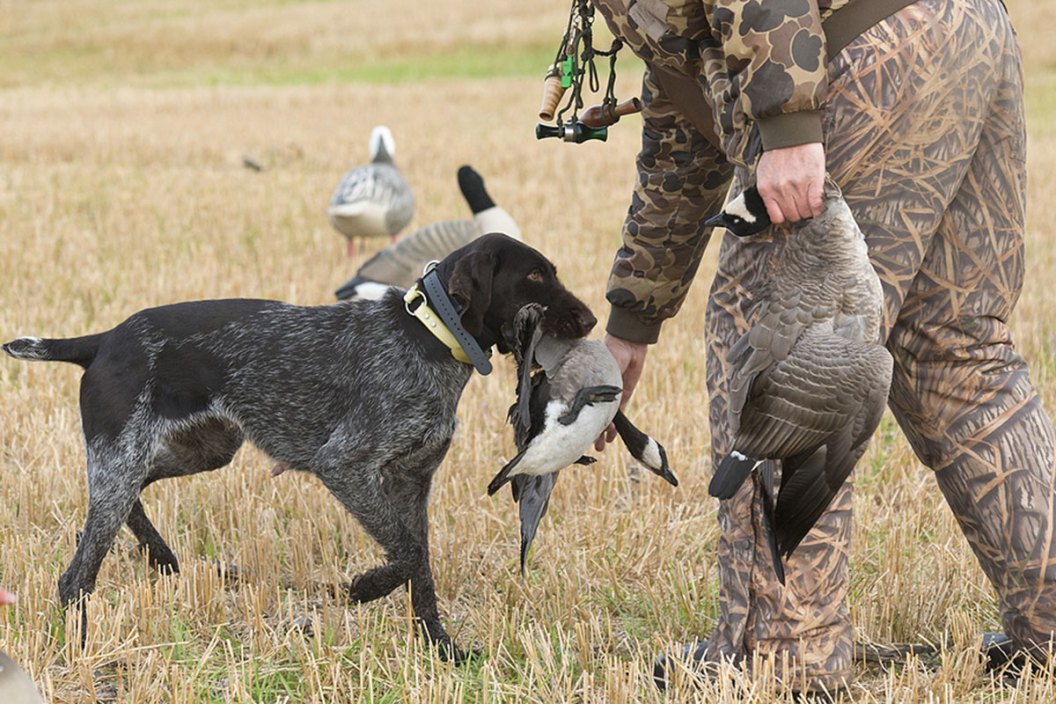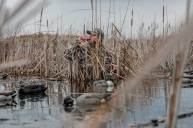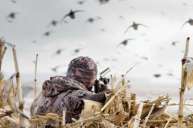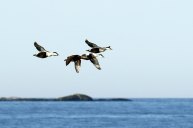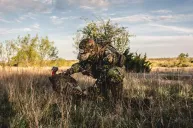Here are a few goose hunting tips that just about anyone can use.
No one who hunts should ever feel like they are helpless, and we wholeheartedly agree.
The old expression "You can't teach experience" fits like a glove when it comes to goose hunting. Most waterfowl hunters find out, sooner or later, that this type of hunting is best done with some assistance from our like-minded brothers and sisters that make up the extended hunting community.
As a part of that community, we recognize the need to share information as vital to the continuation of our hunting heritage. Sure, there are some things we like to keep more private, but help with tactics and strategy doesn't need to be one of them.
Plus, as goose hunters in some states have found out, the Canada geese populations have soared. Their sheer numbers make them not only a nuisance, but a veritable goose hunting bonanza as well.
With this rise in popularity comes the onset of those who may have never tried it, but would love to start. We want to help both beginners and seasoned goose hunters alike.
However, it's also important to remember that snow goose hunting is different than Canada goose hunting, and both of them are different than duck hunting. Waterfowlers can swear by something one year, only to see the opposite occur the next.
It's all about tilting the odds in your favor, and we believe we can help you do that.
We'll start with a simple review of what gear makes the most sense to use, and add in a few tips and pointers that can go a long way in filling a limit come goose season.
Goose Decoys
A great goose caller is one thing, but if you really want to attract them, decoys are the name of the game.
Merely having a large number of decoys isn't always good enough to lure wary geese into shooting range. While full-body decoys are excellent, and have the success behind them to prove it, not everyone can afford such a luxury.
Simple goose shell decoys with stakes to hold them down for field hunting can work just as well, and can be brought to the field in larger numbers.
In a pinch, I've used goose floaters to either fill in holes, add to the numbers, or serve as the central part of the spread. As an extra tip, it's easier when you use clips on the anchor lines for quick removal.
Having both types of decoys means that you can hunt both land and water, giving you a little more bang for your buck.
It's worth it to shop around, because goose decoys come in plenty of other great styles as well. Consider if collapsable, goose socks, or silhouettes would work for your approach. Not only that, but there are goose flags and the all-important spinning wing decoys that can create the illusion of geese moving in your spread.
Goose Decoy Spreads
A new goose hunter can load up on decoys, but where do they go from there? Here's a starting point towards creating a good, though-out decoy spread.
Whether you use small spreads or large, you should know how things appear from above, first and foremost.
One thing that is important to remember when goose hunting is that resting geese come in several ways: sleeping birds, feeders, and sentries. A spread incorporating all of these in likely to be the most lifelike, but the positioning of the decoys is very important as well.
Late season birds in colder conditions tend to sit still once they've reached the ground. Many tuck their heads under a wing and go to sleep. This is where simple goose shells with a few sentries can come in handy as a convincing look. If it's possible with your decoys, you could take the heads off of the shells to make them look like sleeping birds.
Since early season arrivals and "home birds" can be unwary and uneducated, your spread can take on a more jumbled look that doesn't need much in the way of a perfect arrangement.
You still need to leave yourself a place for the birds to land, using the wind as a guide. Having the wind at your back and placing the spread in front of you works best, since waterfowl like to land into the wind and will come in right in your face.
One easy tactic involves placing your dekes in staggered lines around the main spread that makes it look as if fresh birds have just landed and are in the process of walking into the main feeding area.
Having a few full-body-decoys helps make it look as if they are moving more quickly towards the middle of your spread.
Goose Hunting Gear
The obvious need for waterproof, insulated clothing is apparent for those mid to late season hunts, but in some areas the season is on while the weather is still quite warm. Since corn field and cattail camouflage is readily available, a hunter should have no trouble finding a pattern that suits their early season hunt.
Just be sure to pay attention to how well your camo matches your surroundings, and acknowledge that the coloration can change throughout the fall and into winter.
Hats, warm socks, and boots are necessities, but often new goose hunters forget gloves. Don't be one of those.
Waders are especially important when hunting swamps, ponds, and rivers. Honestly, not many goose hunts last for the duration of an entire day, so having the latest and greatest cold weather gear is only necessary as long as you plan to be in the field in the worst of it.
All this does not include vests, shell holders, waterproof blind bag, layout blind, calls, ear protection, eye protection, or a sled to haul it all in. These can all be helpful, but aren't entirely necessary.
Goose Hunting Shotguns and Shells
We recently covered this exact subject and determined that finding a good goose gun comes down to the three Bs: Benelli, Beretta, and Browning. You can toss Mossberg and other brands in too, but the bottom line is that a solid pump action or a semi-automatic shotgun with at least a three-inch chamber is the ultimate choice.
Opt for one with a weather resistant finish to extend the gun's life and give you peace of mind when you inevitably drop it in the mud.
For the early season green birds that will come right in close, steel shot sizes in BB or BBB is plenty. When wary later season birds show up you will need to step it up a notch to Ts.
A Few Final Goose Hunting Tips
Now is the time to understand that specific feeding areas like corn fields and other obvious food sources can give a goose hunter a serious edge.
One interesting thing that we used to do in cut corn fields that were bone dry was to spread an old off-blue sheet on the ground to mimic water. Sure, it's not scientific, but we were young and needed an edge, and honestly it worked. This is to say that land spreads combined with water spreads can make all the difference. Put a few decoys in the "water" and a few on the land.
Whether you have open water or make it look like you do can ensure traffic in your spread, but sometimes flagging can be crucial. The use of either flag type decoys that mimic movement, or the use of wings on a stick to create the wing beats of landing birds, are deadly and have been used now for decades.
Make sure to keep your individual "flying" decoys at least six to seven feet apart in the field and even on the water. Geese are much bigger than they look, especially when their wings are spread. Maybe the biggest factor is that they want and need plenty of room to land without hitting the other birds that are already there.
This is another good reason to leave a good-sized landing zone in your spread.
Maybe the most important thing is to add motion to your set. This can be as simple as employing floating decoys in a river's current or using spinners. Either way, when geese can keep their eyes fixed on your spread and not on your position, you'll have the best chance at getting them to cup their wings and land.
Spending part of your season goose hunting can be one of the most rewarding experiences a sportsman can have. When goose season rolls around and the honkers start to fly, it can often be waterfowl hunting at its finest.
Hearing those honks shortly after sunup and watching these big birds fly into gun range will add great memories to your overall hunting experience.
Looking for a little more or even hot lunch for your hunting blind? Follow my webpage, or on Facebook and Twitter.
NEXT: 5 SMALL ITEMS THAT WILL HELP ENHANCE YOUR ODDS OF DEER SEASON SUCCESS
WATCH
